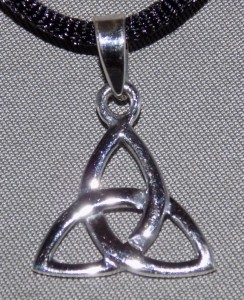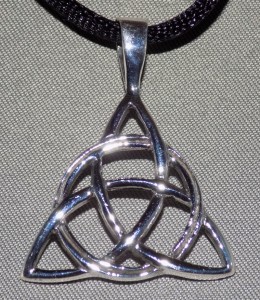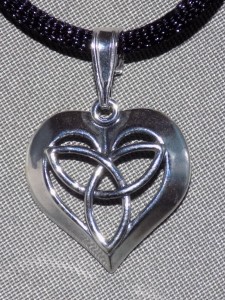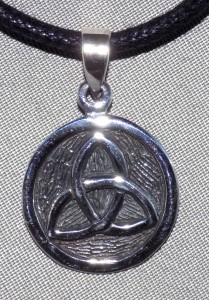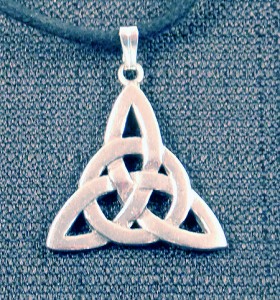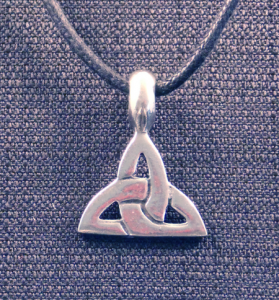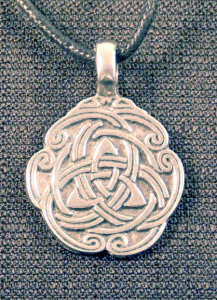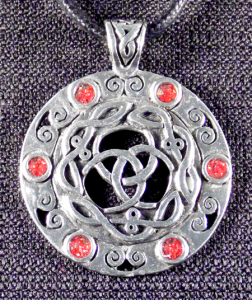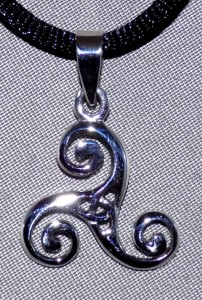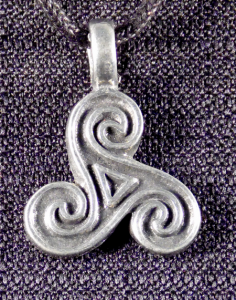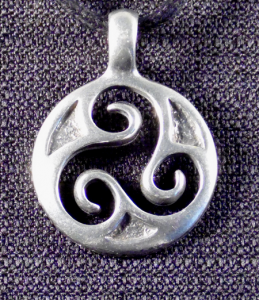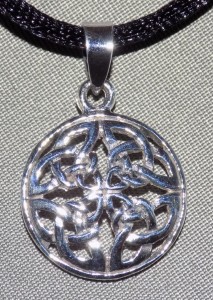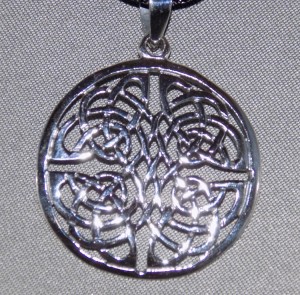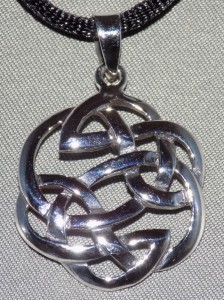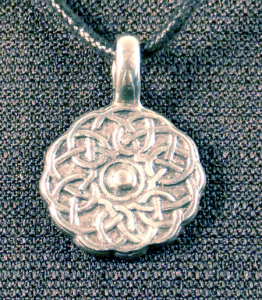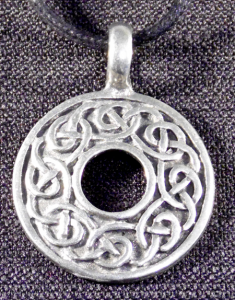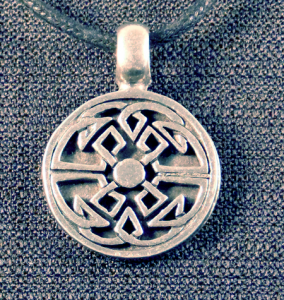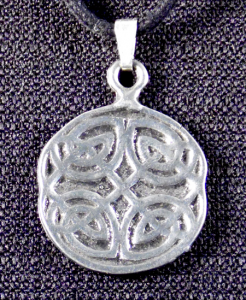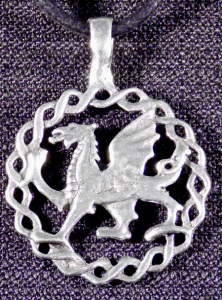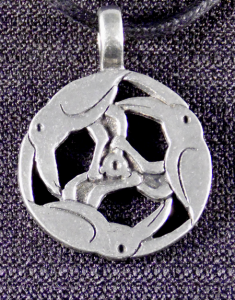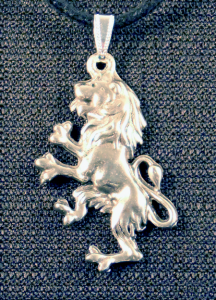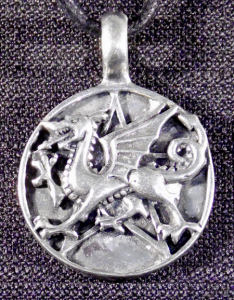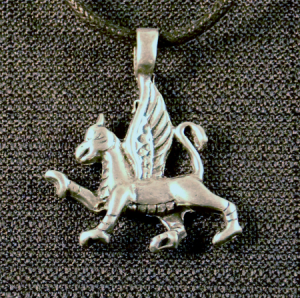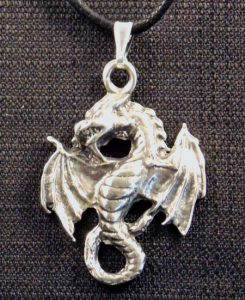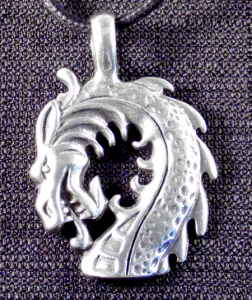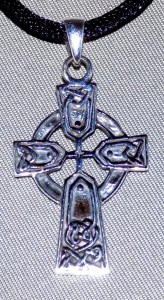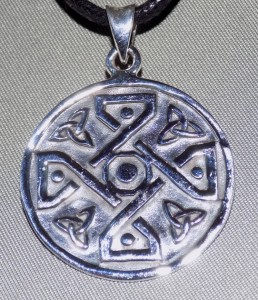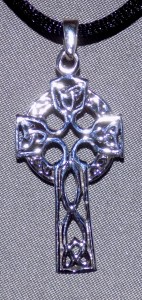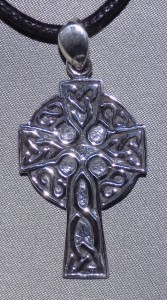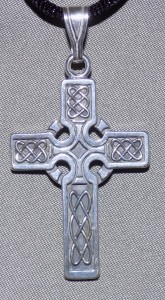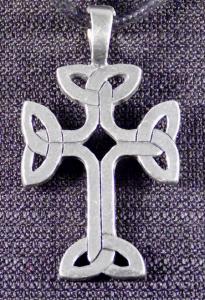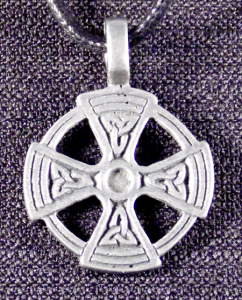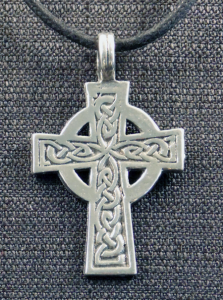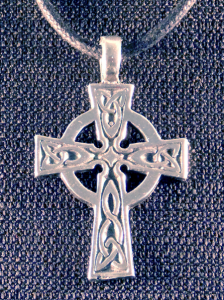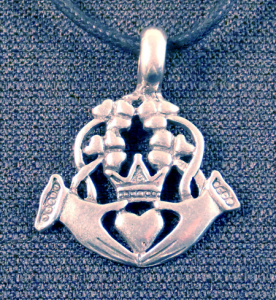Celtic Symbols and Knot Meanings
Celtic Symbols and Knot Meanings – An explanation
The Celts left us very little in the way of written records, and most Celtic symbols have been interpreted by archaeologists and other scholars. Some of the ancient Celtic symbols have changed in meaning over time, having been influenced by the introduction of Christianity and the influence of outside cultures. As a general rule of thumb: the shape of the design determines the “meaning” of the knot work design.
With the symbols below, I have also provided some pictures as examples. Click on the picture to visit the item’s page to order,if you wish.
Circles represent unity or eternity, spirals evoke reincarnation or cycles of life and rebirth.
Triangles and trefoils represent the threefold dominions of earth, sea, and sky.
Squares or four-fold shapes are shield knots, symbols of protection from spirits or malevolent influence.
The Triquetra symbol predates Christianity and was likely a Celtic symbol of the Goddess, and in the North, a symbol of the god Odin. The Triquetra is usually associated as a symbol of a tripartite goddess: that is–the three stages of her life–Maiden, Mother and Crone. Triplicities, or a group of three signs belonging to the same element, were common symbols in Celtic myth and legend, and one of the possible reasons that Christian beliefs were easily accepted by the Celtic peoples. The triquetra is also considered to represnt the triplicities of mind, body, and soul, as well as the three domains of earth according to Celtic legend- earth, sea, and sky. Today, this symbol is often referred to as the “Trinity Knot” because it was accepted by the Celts as their symbol for the Christian Trinity – Father, Son and Holy Spirit.
- Sterling Silver Celtic Trinity Knot Necklace
- Sterling Silver Celtic Trinity Circle Knot
- Sterling Silver Celtic Trinity Knot Heart Necklace
- Sterling Silver Round Trinity Knot Necklace
- Celtic Necklaces in Pewter
- Trinity Knot (Triquetra)
- Celtic Trinity Knot
- Viking Celtic Knot Necklace
The Triskele or triple spiral is one of the most common elements of Celtic art. Triskeles are found in a variety of styles in both ancient and modern Celtic artwork. Usually the triskeles are used in reference to the Mother Goddess. They also evoke the Celtic concept of the domains of material existence- earth, water, and sky.
- Celtic Necklaces in Sterling Silver
- Celtic Triskele (Triple Spiral)
- Round Celtic Triskele
The Shield Knot is an ancient and nearly universal symbol. The shield knot has been used for thousands of years by a variety of peoples for protection and warding off evil spirits.
Circle Knots represent unity or eternity, ever-lasting love, happiness, health or prosperity.
- Sterling Silver Four Knot Celtic Knot Necklace
- Sterling Silver Circular Ornate Celtic Knot Necklace
- Sterling Silver Celtic Knot Necklace
- Celtic Infinity Circle Knot
- Viking Celtic Knot Necklace
- Celtic Circular Infinity Knot Necklace
- Celtic Round Tribal Knot Necklace
- Celtic Four Elements Knot Necklace
Zoomorphic or animal designs represent the attributes of the animal. Hounds-loyalty, Lions-nobility/ strength, Snakes (dragons, maybe)-rebirth, Birds- purity/ nobility, Bulls- strength, Boar-ferocity, Fish–clairvoyance, Horses-fertility/beauty, Stag-Virility
- Celtic Welsh Dragon
- Triple Ravens Celtic Knot Necklace
- Scottish Rampant Lion
- Celtic Dragon with Pentangle
- Gryphon (Griffin)
- Winged Dragon
- Dragon With Curved Neck Necklace
The Celtic Cross (Ionic cross) has it’s roots in a pre-Christian variation of the Solar cross. Examples of the Celtic cross date back as far as 5000 B.C. Its origins are not known, but it was known to be an early symbol of the sun god Taranis. After the Christian conversion of the Celtic people , the Celtic Cross became an emblem of the Celtic Christian Church. Irish legend tells that the cross was introduced to Ireland by St. Columba, so it is sometimes referred to as Columba’s cross, or the Ionic cross, after St. Columba’s monastery on the island of Iona.
The circle in the Celtic Cross is sometimes referred to as a halo, or a symbol of eternity.
- Sterling Silver Celtic Cross with Thin Arms
- Sterling Silver Circular Celtic Cross Necklace
- Sterling Silver Celtic Cross with Trinity Knots
- Sterling Silver Celtic Cross Neclkace
- Sterling Silver Celtic Cross with Eternity Knots
- Celtic Cross with Trinity Knots
- Circular Celtic Cross Necklace
- Celtic Cross Necklace
- Celtic Cross Necklace with Trinity Knots
The Irish Claddagh Symbol is named for the Irish coastal town of Claddagh , where the ring design is based on a local legend. According to the tale, a local man, kidnapped into slavery, becomes apprenticed to a goldsmith. He designs and makes this ring and returns home to present it to his true love.
Claddagh rings are a traditional token of loyalty and friendship as well as romantic love.
The hands in the design represent friendship, the heart, love, and the crown, loyalty.
By tradition, it is worn- as a wedding ring, on the left hand, with the heart pointed inward. As an engagement ring, it is worn on the right hand, with the heart pointing inward; for friendship, it is worn on the right hand, heart turned outward.
- Irish Claddagh Pendant Necklace
